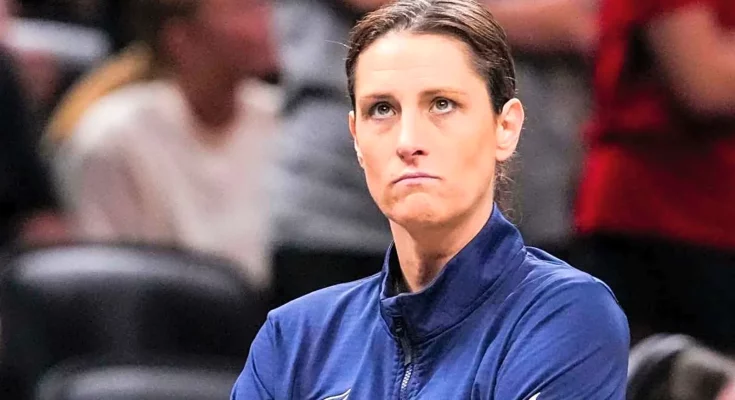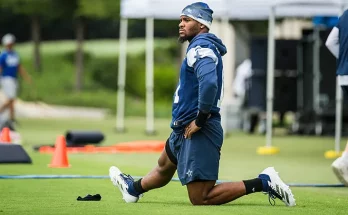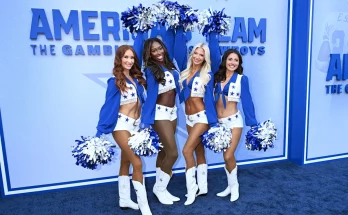The relationship between a head coach and a fanbase is always complicated, especially in professional sports where emotions run high, expectations are rarely static, and loyalty can feel conditional. The Indiana Fever have long been one of the more passionate fan-supported franchises in the WNBA, built on history, tradition, and a strong identity that dates back to their championship season in 2012. But today, the conversation around the Fever has taken a sharp and difficult turn, as many fans have begun voicing a clear and unwavering stance that they are “done” with Stephanie White. Once welcomed as a figure who carried with her both playing and coaching pedigree, White now finds herself at the center of criticism and frustration as the Fever struggle to meet expectations in a season that was supposed to represent progress rather than regression.
The frustration did not come overnight, but rather it has built up over the course of several seasons. For Fever fans, the investment in the team is both emotional and cultural. They have endured stretches of rebuilding and losing seasons, but what hurts most is when they see talent on the roster that feels underutilized, mismanaged, or stifled by questionable coaching decisions. White, who once led the Fever to the WNBA Finals during her first stint with the team as head coach in 2015, returned with the hope that she could bring stability, professionalism, and championship-level standards back to Indiana. At the time of her hiring, it was seen as a nostalgic homecoming, a move that signaled the franchise wanted someone who understood its history and could connect with both players and the community. But nostalgia can only last so long before performance dictates perception, and now many Fever fans no longer see White as the right leader for this team’s future.
Central to the backlash is the way in which White’s rotations, strategies, and in-game adjustments have consistently come under fire. Fans argue that the Fever have one of the brightest young cores in the WNBA, highlighted by star rookie Caitlin Clark, alongside Aliyah Boston, Kelsey Mitchell, and NaLyssa Smith. On paper, this is a foundation most franchises would envy, yet the results on the court have not reflected that potential. Inconsistent offensive schemes, defensive breakdowns, and late-game collapses have become recurring themes. For a fanbase eager to see a competitive product that showcases the promise of its young stars, it feels like wasted opportunity. Many have pointed out that instead of maximizing the unique talents of players like Clark and Boston, White has leaned into rigid play-calling and questionable substitution patterns that kill momentum and leave the Fever vulnerable in close contests.
One particular flashpoint that has fueled fan frustration is the handling of Caitlin Clark, the highly publicized rookie whose arrival brought national attention and skyrocketed ticket sales for the Fever. Clark was expected to be the face of the franchise, a once-in-a-generation player whose ability to shoot from deep, create for teammates, and bring flair to the game could change Indiana’s trajectory. While Clark has had standout performances, critics argue that White’s system has not put her in the best position to succeed consistently. Fans have seen Clark bogged down by halfcourt sets that minimize her creativity and questioned why she is often taken out during crucial stretches. Social media platforms have become loud with accusations that White either doesn’t understand how to utilize Clark properly or is unwilling to adjust her system to fully embrace Clark’s skillset. For fans who see Clark as not just a star but the lifeline of the franchise, this feels like an unforgivable failure in coaching philosophy.
Aliyah Boston’s usage has been another sore spot in the discussion. The reigning Rookie of the Year and cornerstone in the paint, Boston has shown elite rebounding and scoring ability when given the chance, yet fans believe she is being underutilized in White’s schemes. Too often, they argue, Boston is forced to operate in isolation or is starved of touches in stretches where she could dominate. For a team that should be running much of its offense through the inside-out dynamic of Boston and Clark, the Fever instead often look disjointed and predictable. These inefficiencies make the team easier to defend, and fans see that as a direct reflection of White’s inability to adapt or innovate.
The emotional side of this disconnect is just as significant as the tactical side. Fever fans have invested deeply in the return of competitive basketball to Indiana, particularly with the excitement of Clark’s arrival bringing new waves of supporters into the fold. To them, the sense that the franchise might squander this golden opportunity under White’s leadership is almost unbearable. They see the parallels with other franchises that failed to capitalize on star talent during crucial development years, and they fear the Fever could be heading down that same road. For fans who endured the difficult years post-Tamika Catchings, where wins were scarce and optimism was hard to sustain, the idea of watching potential greatness be hindered by coaching decisions is simply too much.
In the sports world, “being done” with a coach is more than just voicing displeasure. It signals a breaking point where fans no longer believe the relationship can be salvaged. The patience that was once extended out of respect for White’s history with the franchise has evaporated, replaced by a determination that a change must be made if the Fever are to fully embrace their future. This has manifested in boos at games, angry social media campaigns, and calls for the front office to act swiftly before more damage is done. The language is blunt, the emotion is raw, and the message is clear: fans no longer see Stephanie White as the coach who can lead Indiana to where they want to go.
Yet, this situation also raises questions about fairness and perspective. Coaching in the WNBA comes with immense challenges, particularly for a team that is still in a transitional phase. Building chemistry with young players, developing a consistent identity, and navigating a league where parity is strong are not small tasks. White herself is not lacking in basketball knowledge or experience, and her commitment to the Fever cannot be questioned. Some observers argue that the backlash may be too reactionary, that patience is still required to allow the team to grow into its identity. They point to examples of franchises that gave their coaches time to work through early struggles before reaping long-term success. But the counterpoint from fans is that time feels too precious when talents like Clark and Boston are ready to win now, and a wasted year could have ripple effects on morale and player development.
There is also the added layer of expectations that comes with Clark’s arrival. The Fever, once a small-market team quietly working through rebuilds, suddenly became one of the most scrutinized franchises in the league. Every game is televised, every play dissected, and every coaching decision magnified in a way the organization has never experienced before. White is coaching not just against opponents but against the heightened visibility and pressure that Clark’s stardom brings. In that sense, the job she took is fundamentally different from the one she left years ago. Fans, however, are less forgiving of that context because they see other teams around the league quickly adapting and thriving with their stars, and they believe the Fever deserve the same.
The Fever front office now finds itself in a precarious position. On one hand, sticking with White provides continuity and avoids the chaos of a midseason coaching change, which can sometimes do more harm than good. On the other, ignoring the growing dissatisfaction of the fanbase risks alienating the very people who fuel ticket sales, media attention, and the momentum behind the Fever’s resurgence in relevance. Sports franchises cannot thrive without fan engagement, and when the majority of that engagement turns hostile toward the coach, pressure inevitably mounts for leadership to take action. Even if the team insists it is sticking by White for now, the chorus of voices calling for her dismissal may ultimately force their hand.
Looking at the broader landscape, it is clear this is not just a local Indiana storyline but one that has implications for the league as a whole. The WNBA is in a growth phase, expanding its reach and spotlighting its stars more than ever before. How franchises manage their talent, coaching decisions, and fan relations are now under a microscope in a way that will shape the league’s narrative moving forward. For Indiana, the question becomes whether clinging to White represents stability or stubbornness, and whether making a coaching change would represent panic or progress. For fans, though, the debate feels settled. Their patience has run its course, and they are ready to see someone else take the reins.
Ultimately, the story of Indiana Fever fans turning on Stephanie White is about the tension between hope and reality. Hope that a once-proud franchise could return to glory with a roster full of young stars. Hope that a coach with history in the organization could bridge past and future. And the reality that on-court struggles, strategic missteps, and missed opportunities can erode even the deepest reservoirs of goodwill. Whether White remains in her role or not, the message from the fanbase is unmistakable: they want more, they believe more is possible, and they are unwilling to accept anything less. That urgency, more than anything, reflects the passion of Indiana Fever supporters who see greatness within reach and demand that their franchise seize it.
Word count: \~1507



